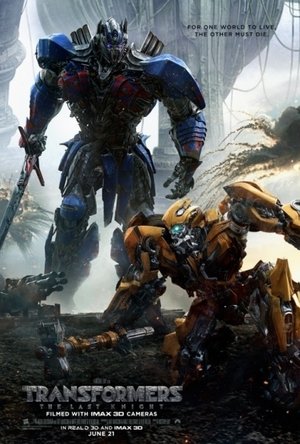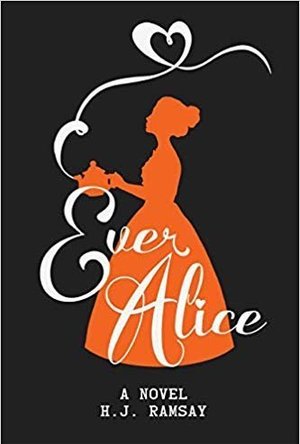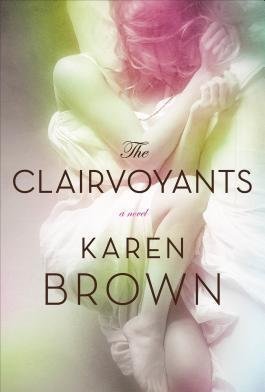Search
Search results
Hazel (1853 KP) rated Witch Hunter (The Witch Hunter, #1) in Books
Dec 17, 2018
<i>This eBook was provided by the publisher via NetGalley in exchange for an honest review </i>
The sixteenth century is a dangerous time for wizards and witches to live – a place where magic is illegal. Sixteen-year-old Elizabeth Grey spends her time disguised as a kitchen maid as she goes around hunting down witches. However when she is accused of witchcraft after being found in possession of herbs, her life is over. Suddenly the most wanted wizard in Anglia, who claims she can help him as much as he can help her, rescues her. Finding herself surrounded by the enemy, Elizabeth must decide whether she should escape and turn them in, or begin to trust people she has been raised to believe are evil.
<i>Witch Hunter</i> is a young adult fantasy novel targeted at those with a love of both historical and magical stories. Initially Elizabeth wants to capture and send all wizards and witches to their deaths, but after her rescue begins to realize that not all she has been led to believe is true. Magic is neither inherently good nor bad; it is what someone does with the power that matters. This story is full of action from beginning to end as Elizabeth learns who to trust and who needs to be destroyed.
At the beginning of the book there was a particular reference to something that felt inappropriate for young readers, however the remainder is exactly what the reader expects to find within this genre. Underneath the magical storyline is a message that urges readers not to jump to conclusions and be judgmental, particularly about things that they do not fully understand. Substitute magic for mental illness, disabilities or different cultures, and you have something that readers of all ages can relate to today.
<i>Witch Hunter</i> is the first in what promises to be an incredible series by the author Virginia Boecker. Although the key issue was resolved within this first book there is an even larger issue that still needs settling. Readers who enjoy this novel will be eagerly waiting to find out what Elizabeth and her new friends do next.
The sixteenth century is a dangerous time for wizards and witches to live – a place where magic is illegal. Sixteen-year-old Elizabeth Grey spends her time disguised as a kitchen maid as she goes around hunting down witches. However when she is accused of witchcraft after being found in possession of herbs, her life is over. Suddenly the most wanted wizard in Anglia, who claims she can help him as much as he can help her, rescues her. Finding herself surrounded by the enemy, Elizabeth must decide whether she should escape and turn them in, or begin to trust people she has been raised to believe are evil.
<i>Witch Hunter</i> is a young adult fantasy novel targeted at those with a love of both historical and magical stories. Initially Elizabeth wants to capture and send all wizards and witches to their deaths, but after her rescue begins to realize that not all she has been led to believe is true. Magic is neither inherently good nor bad; it is what someone does with the power that matters. This story is full of action from beginning to end as Elizabeth learns who to trust and who needs to be destroyed.
At the beginning of the book there was a particular reference to something that felt inappropriate for young readers, however the remainder is exactly what the reader expects to find within this genre. Underneath the magical storyline is a message that urges readers not to jump to conclusions and be judgmental, particularly about things that they do not fully understand. Substitute magic for mental illness, disabilities or different cultures, and you have something that readers of all ages can relate to today.
<i>Witch Hunter</i> is the first in what promises to be an incredible series by the author Virginia Boecker. Although the key issue was resolved within this first book there is an even larger issue that still needs settling. Readers who enjoy this novel will be eagerly waiting to find out what Elizabeth and her new friends do next.
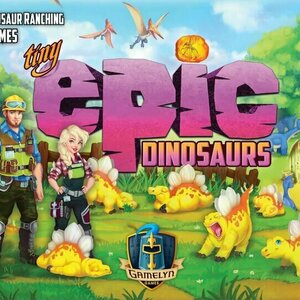
Tiny Epic Dinosaurs
Tabletop Game
In Tiny Epic Dinosaurs, breakthroughs in modern science have dinosaurs and humans existing side by...
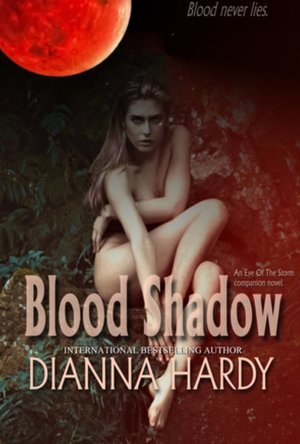
Blood Shadow (Blood Never Lies 1)
Book
Blood Shadow is a companion novel to the Eye of the Storm series and also acts as a PREQUEL to a...
ClareR (6054 KP) rated Beautiful Shining People in Books
Aug 5, 2023
“”Beautiful, shining kami in the sky. All different. All unique. Just like us”…After that, whenever we went camping, I would always tell my parents I couldn’t wait until nightfall so I could see the beautiful shining people in the sky.”
I honestly didn’t know what to expect when I started reading this, but I quickly realised that I was loving what I was reading. I do like both speculative and science fiction, so I knew we’d be off to a good start.
This is so much more though. It’s about relationships, both with others and oneself. It’s about loneliness, feeling cut off from others and trying to make a connection.
Both John, a young American tech genius, and Neotnia, are loners. Neither of them want to be alone. John is trying to escape his past and his past self, and Neotnia wants to find her past. They’re both very caring, likeable characters, Neotnia in particular, especially in her interactions with the elderly residents of a home she volunteers at.
My particular favourite was the cafe owner and Neotnia’s guardian - Goeido. He has an interesting and sad past as a Sumo, and this is probably the reason why he is so protective towards Neotnia.
Some of the themes have their place in our society too. The rise of AI, tense relationships between superpowers, terrorist attacks, deep fakes, cyber attacks, fake news - all of these affect us today.
Tokyo as a setting was inspired. All of the AI and robots didn’t seem out of place. I mean, we expect them there, don’t we? Robots taking your order in a fast food restaurant and helping you with directions in the street seem not too far a reach of the imagination in Japan (you can probably tell I’ve never been there!).
The last chapter or so, was so powerful. It was sad and explained all of what had gone before. It was emotional, and the ending was perfect.
Many, many thanks to Orenda for sending me a copy as a part of their book club. I’m really glad I read it!
I honestly didn’t know what to expect when I started reading this, but I quickly realised that I was loving what I was reading. I do like both speculative and science fiction, so I knew we’d be off to a good start.
This is so much more though. It’s about relationships, both with others and oneself. It’s about loneliness, feeling cut off from others and trying to make a connection.
Both John, a young American tech genius, and Neotnia, are loners. Neither of them want to be alone. John is trying to escape his past and his past self, and Neotnia wants to find her past. They’re both very caring, likeable characters, Neotnia in particular, especially in her interactions with the elderly residents of a home she volunteers at.
My particular favourite was the cafe owner and Neotnia’s guardian - Goeido. He has an interesting and sad past as a Sumo, and this is probably the reason why he is so protective towards Neotnia.
Some of the themes have their place in our society too. The rise of AI, tense relationships between superpowers, terrorist attacks, deep fakes, cyber attacks, fake news - all of these affect us today.
Tokyo as a setting was inspired. All of the AI and robots didn’t seem out of place. I mean, we expect them there, don’t we? Robots taking your order in a fast food restaurant and helping you with directions in the street seem not too far a reach of the imagination in Japan (you can probably tell I’ve never been there!).
The last chapter or so, was so powerful. It was sad and explained all of what had gone before. It was emotional, and the ending was perfect.
Many, many thanks to Orenda for sending me a copy as a part of their book club. I’m really glad I read it!
Movie Metropolis (309 KP) rated Transformers: The Last Knight (2017) in Movies
Jun 10, 2019
Has anyone got an aspirin?
Shhh! Don’t tell anyone I told you this but I’m a little bit of a Transformers fanboy. As a child I had many of the series’ toys and adored the animated series. Heck, I even have an Optimus Prime bobblehead next to my bed.
So when director Michael Bay announced in 2005 that he was planning a Transformers live-action movie with Steven Spielberg as producer, my heart skipped a beat. 2007 came and the film was everything I wanted.
Fast forward ten years and the series has, rightly or wrongly, become a laughing stock for critics the world over. Derided for nonsensical plots, messy special effects and in some cases racism, it’s been regarded as one of the worst film franchises of all time. Does the fifth entry in the franchise, The Last Knight redeem the series somewhat?
Humans are at war with the Transformers and Optimus Prime (Peter Cullen) has disappeared. The key to saving the future lies buried in the secrets of the past and the hidden history of Transformers on Earth. Now, it’s up to the alliance of Cade Yeager (Mark Wahlberg), Bumblebee, a Lord (Sir Anthony Hopkins) and an Oxford professor (Laura Haddock) to save the planet.
Michael Bay’s swansong is definitely the best of the series since the 2007 original, but suffers from all the problems of its 3 sequels.
On a budget of $260million, there was no doubt The Last Knight would look spectacular, but things really have stepped up a gear. The CGI is some of the best put to film and makes the uncharacteristically sloppy special effects of Age of Extinction look incredibly dated.
The Transformers themselves all look great with Bumblebee in particular taking on the role of “lead bot”. Newcomer Squeeks is sure to become the BB-8 of the franchise and is predictably adorable despite his limited screen-time.
Of the cast, it’s a story of same old. The voice acting on all the Transformers is good with a disappointingly underused Peter Cullen stealing the show once again. Mark Wahlberg is permanently likeable and it’s always a pleasure having John Turturro’s Agent Simmons returning to the screen. Laura Haddock is the typical Michael Bay choice of female lead, channelling Megan Fox, Rosie Huntington-Whitely and Nicola Peltz.
However, Sir Anthony Hopkins is where this film raises itself above the parapet. The veteran actor is really exceptional and brightens the movie in every single scene he appears in. You can tell he’s not taking it too seriously, and that is exactly the point of this series.
Sure, the plot is a hot steaming mess of nonsensical dialogue with loose strands of story, and at 149 minutes it’s a good half hour too long, but with all the fear and hate in real life, sometimes it’s nice to switch your brain off and escape to a world where robots exist – and there’s nothing wrong with that.
Michael Bay may not be the subtlest of directors. Give him a classy love story and he’ll turn it into Fifty Shades of Grey, but he’s clearly a very clever man. The critics have savaged this franchise but audiences keep coming back for more and who can blame them?
If this is, as has been said by the man himself, Michael Bay’s last entry into the Transformers canon, then it’s not a bad film to leave on whatsoever.
You know the score by now. Don’t go in expecting Shakespeare or Oscar-winning performances and you’ll be fine. Just make sure you take some paracetamol; crikey it’s loud.
https://moviemetropolis.net/2017/06/24/transformers-the-last-knight-review/
So when director Michael Bay announced in 2005 that he was planning a Transformers live-action movie with Steven Spielberg as producer, my heart skipped a beat. 2007 came and the film was everything I wanted.
Fast forward ten years and the series has, rightly or wrongly, become a laughing stock for critics the world over. Derided for nonsensical plots, messy special effects and in some cases racism, it’s been regarded as one of the worst film franchises of all time. Does the fifth entry in the franchise, The Last Knight redeem the series somewhat?
Humans are at war with the Transformers and Optimus Prime (Peter Cullen) has disappeared. The key to saving the future lies buried in the secrets of the past and the hidden history of Transformers on Earth. Now, it’s up to the alliance of Cade Yeager (Mark Wahlberg), Bumblebee, a Lord (Sir Anthony Hopkins) and an Oxford professor (Laura Haddock) to save the planet.
Michael Bay’s swansong is definitely the best of the series since the 2007 original, but suffers from all the problems of its 3 sequels.
On a budget of $260million, there was no doubt The Last Knight would look spectacular, but things really have stepped up a gear. The CGI is some of the best put to film and makes the uncharacteristically sloppy special effects of Age of Extinction look incredibly dated.
The Transformers themselves all look great with Bumblebee in particular taking on the role of “lead bot”. Newcomer Squeeks is sure to become the BB-8 of the franchise and is predictably adorable despite his limited screen-time.
Of the cast, it’s a story of same old. The voice acting on all the Transformers is good with a disappointingly underused Peter Cullen stealing the show once again. Mark Wahlberg is permanently likeable and it’s always a pleasure having John Turturro’s Agent Simmons returning to the screen. Laura Haddock is the typical Michael Bay choice of female lead, channelling Megan Fox, Rosie Huntington-Whitely and Nicola Peltz.
However, Sir Anthony Hopkins is where this film raises itself above the parapet. The veteran actor is really exceptional and brightens the movie in every single scene he appears in. You can tell he’s not taking it too seriously, and that is exactly the point of this series.
Sure, the plot is a hot steaming mess of nonsensical dialogue with loose strands of story, and at 149 minutes it’s a good half hour too long, but with all the fear and hate in real life, sometimes it’s nice to switch your brain off and escape to a world where robots exist – and there’s nothing wrong with that.
Michael Bay may not be the subtlest of directors. Give him a classy love story and he’ll turn it into Fifty Shades of Grey, but he’s clearly a very clever man. The critics have savaged this franchise but audiences keep coming back for more and who can blame them?
If this is, as has been said by the man himself, Michael Bay’s last entry into the Transformers canon, then it’s not a bad film to leave on whatsoever.
You know the score by now. Don’t go in expecting Shakespeare or Oscar-winning performances and you’ll be fine. Just make sure you take some paracetamol; crikey it’s loud.
https://moviemetropolis.net/2017/06/24/transformers-the-last-knight-review/
Janeeny (200 KP) rated Ever Alice in Books
May 9, 2019 (Updated Jun 10, 2019)
Unfortunately I was quite disappointed with this book. Mostly because it had potential, but just fell really short of the mark.
Alice is now 15 years old and after years of telling people about her adventures in Wonderland her parents are starting to question her sanity and take her to see a specialised doctor at an Asylum in Switzerland. Sadly things are not quite what they seem at the asylum, but just when things appear to be at their worst for Alice a familiar white rabbit helps her escape the asylum and she finds herself back in Wonderland. What follows is actually quite an intricate tale of suspicion and treachery, reality and fantasy. I’m just not sure it works as an ‘Alice in wonderland’ tale.
I was impressed at first as the author really did seem to capture the essence of the silliness of wonderland, with some scenes that wouldn’t be out of place in a Monty Python sketch or a Mel Brooks movie, but after a while it began to feel like the author was trying a bit too hard and it started to become a slightly repetitive and tedious.
The Character development didn’t really work for me either, especially The Queen of Hearts. For me she was a bit two-dimensional, and although the author tries to give her a bit of a back story it just doesn’t adhere to the character.
Some aspects of the language also grated on me. For instance, when parents are being referred to as Mum and Papa, it doesn’t sit well with me. It’s either going to be mum and dad or mama and papa. I know that is probably just a personal peeve of mine, but every time I came across that phrasing it just halted the story for me. Oh and don’t get me started on the Pop culture references! An actress named Marilyn Montague, who sounds very similar to another well know Marilyn, and a boyband called ‘Mice to men’. They may have been put in for humour, but they just didn’t seem to flow with the story.
As I said, in essence it was a good story, if a little predictable at the end, I just feel that using it as a ‘re-imagining’ of Alice left it with some expectations that it just couldn’t live up to.
Alice is now 15 years old and after years of telling people about her adventures in Wonderland her parents are starting to question her sanity and take her to see a specialised doctor at an Asylum in Switzerland. Sadly things are not quite what they seem at the asylum, but just when things appear to be at their worst for Alice a familiar white rabbit helps her escape the asylum and she finds herself back in Wonderland. What follows is actually quite an intricate tale of suspicion and treachery, reality and fantasy. I’m just not sure it works as an ‘Alice in wonderland’ tale.
I was impressed at first as the author really did seem to capture the essence of the silliness of wonderland, with some scenes that wouldn’t be out of place in a Monty Python sketch or a Mel Brooks movie, but after a while it began to feel like the author was trying a bit too hard and it started to become a slightly repetitive and tedious.
The Character development didn’t really work for me either, especially The Queen of Hearts. For me she was a bit two-dimensional, and although the author tries to give her a bit of a back story it just doesn’t adhere to the character.
Some aspects of the language also grated on me. For instance, when parents are being referred to as Mum and Papa, it doesn’t sit well with me. It’s either going to be mum and dad or mama and papa. I know that is probably just a personal peeve of mine, but every time I came across that phrasing it just halted the story for me. Oh and don’t get me started on the Pop culture references! An actress named Marilyn Montague, who sounds very similar to another well know Marilyn, and a boyband called ‘Mice to men’. They may have been put in for humour, but they just didn’t seem to flow with the story.
As I said, in essence it was a good story, if a little predictable at the end, I just feel that using it as a ‘re-imagining’ of Alice left it with some expectations that it just couldn’t live up to.
Billie Wichkan (118 KP) rated Wolfhunter River (Stillhouse Lake, #3) in Books
May 22, 2019
She cant ignore a cry for help. But in this remote hunting town, its open season.
Gwen Proctor escaped her serial-killer husband and saved her family. What she cant seem to outrun is his notoriety. Or the sick internet vigilantes still seeking to avenge his crimes. For Gwen, hiding isnt an option. Not when her only mission is to create a normal life for her kids.
But now, a threatened woman has reached out. Marlene Crockett, from the remote town of Wolfhunter, is panicked for herself and her daughter. When Gwen arrives in the small, isolated rural community, Marlene is already deadher own daughter blamed for the murder. Except thats not the person Marlene feared at all. And Gwen isnt leaving until she finds out who that was.
But it may already be too late. A trap has been set. And its poised to snap shut on everyone Gwen loves. Her stalkers are closing in. And in a town as dark as Wolfhunter, its so easy for them to hide
Wolfhunter River, the third book in Caine's Stillhouse Lake series .It is INTENSE and that's putting it mildly.
This is definitely bloody and action-packed with Gwen, Sam and the kids helping to save the day in Wolfhunter. The threat of Melvin is gone, but there is still evil out there. Now it seems that the series may continue with Gwen going in a new direction though it's probable that there will still be more of the fallout from her being the wife of a mass murderer and her still trying to escape her past.
This story was PACKED with twists and turns and shocking, jaw-dropping moments.
I definitely recommend not only this book, but the whole series. If you haven't read all the books yet, start with Stillhouse Lake. You will need to read the first two books to understand their lives; but not completely necessary to read this one.
I'm already looking forward to #4 it is called Bitter Falls (Stillhouse Lake Book 4) (21 Jan 2020) according to Amazon.
Highly Recommend reading!!!!!!
Thanks to NetGalley and Thomas & Mercer and Rachel Caine for the opportunity to experience this book in advance of its release.
Gwen Proctor escaped her serial-killer husband and saved her family. What she cant seem to outrun is his notoriety. Or the sick internet vigilantes still seeking to avenge his crimes. For Gwen, hiding isnt an option. Not when her only mission is to create a normal life for her kids.
But now, a threatened woman has reached out. Marlene Crockett, from the remote town of Wolfhunter, is panicked for herself and her daughter. When Gwen arrives in the small, isolated rural community, Marlene is already deadher own daughter blamed for the murder. Except thats not the person Marlene feared at all. And Gwen isnt leaving until she finds out who that was.
But it may already be too late. A trap has been set. And its poised to snap shut on everyone Gwen loves. Her stalkers are closing in. And in a town as dark as Wolfhunter, its so easy for them to hide
Wolfhunter River, the third book in Caine's Stillhouse Lake series .It is INTENSE and that's putting it mildly.
This is definitely bloody and action-packed with Gwen, Sam and the kids helping to save the day in Wolfhunter. The threat of Melvin is gone, but there is still evil out there. Now it seems that the series may continue with Gwen going in a new direction though it's probable that there will still be more of the fallout from her being the wife of a mass murderer and her still trying to escape her past.
This story was PACKED with twists and turns and shocking, jaw-dropping moments.
I definitely recommend not only this book, but the whole series. If you haven't read all the books yet, start with Stillhouse Lake. You will need to read the first two books to understand their lives; but not completely necessary to read this one.
I'm already looking forward to #4 it is called Bitter Falls (Stillhouse Lake Book 4) (21 Jan 2020) according to Amazon.
Highly Recommend reading!!!!!!
Thanks to NetGalley and Thomas & Mercer and Rachel Caine for the opportunity to experience this book in advance of its release.
Kristy H (1252 KP) rated The Clairvoyants in Books
Feb 13, 2018
Martha has had an interesting childhood and upbringing. As a young girl, she saw the ghost of her aunt, a nun, in her grandfather's barn. As a teen, the dead frequently appeared to Martha, though she rarely knew what to do with these apparitions. Also in her teen years, Martha's younger sister, Del, wound up sent to an institution. Incredibly close as children, Del's slow decent into some sort of madness also haunted Martha. So she decides to depart her family's farm and move inland to college. Once in Ithaca, Martha falls in love, is reunited with Del, and frequently sees the ghost of Mary Rae, a missing woman from a neighboring town, who stands beneath Martha's window for hours, wearing her coat and with her hair covered in ice. Martha had hoped to escape the dead in Ithaca, but it seems like somehow everything is going to converge on her nonetheless.
This book was not at all what I had expected; it's less a supernatural thriller and more a literary treatise as we watch Martha deal with the events in her life. The chapters switch between present-day in Ithaca and flashbacks to Martha's life growing up. Sometimes it's a little confusing, but also quite interesting. I had expected the book to be more of a mystery as we try to figure out what happened to Mary Rae, but honestly, it's pretty apparent from the beginning who is responsible for her disappearance, even if the "how" is unknown. Still, the book is incredibly suspenseful and very compelling; I found myself trying to read it every chance as I had.
The psychological/mystical aspect isn't really as much at play here as you'd think from the summary, but that's okay. I didn't find it as creepy as some of the other reviews, but as I stated, still very spellbinding. There's an "aha moment" when you're reading and things come together that is masterfully done. While I wasn't in love with the character of Martha, I was intrigued by both she and Del, and I found all of the characters to be fascinating and intricate in their own way. The ending was a little quick for me, but somewhat redeemed by one particular portion (don't want to give away a spoiler). Overall, this was a different book--unlike ones I typically read--and while I didn't find it amazing, it was an engrossing and suspenseful novel. 3.5 stars.
This book was not at all what I had expected; it's less a supernatural thriller and more a literary treatise as we watch Martha deal with the events in her life. The chapters switch between present-day in Ithaca and flashbacks to Martha's life growing up. Sometimes it's a little confusing, but also quite interesting. I had expected the book to be more of a mystery as we try to figure out what happened to Mary Rae, but honestly, it's pretty apparent from the beginning who is responsible for her disappearance, even if the "how" is unknown. Still, the book is incredibly suspenseful and very compelling; I found myself trying to read it every chance as I had.
The psychological/mystical aspect isn't really as much at play here as you'd think from the summary, but that's okay. I didn't find it as creepy as some of the other reviews, but as I stated, still very spellbinding. There's an "aha moment" when you're reading and things come together that is masterfully done. While I wasn't in love with the character of Martha, I was intrigued by both she and Del, and I found all of the characters to be fascinating and intricate in their own way. The ending was a little quick for me, but somewhat redeemed by one particular portion (don't want to give away a spoiler). Overall, this was a different book--unlike ones I typically read--and while I didn't find it amazing, it was an engrossing and suspenseful novel. 3.5 stars.

How to Meditate with Pema Chödrön
Lifestyle and Health & Fitness
App
“We train in being present with whatever arises in our experience, whether it is pain or pleasure,...
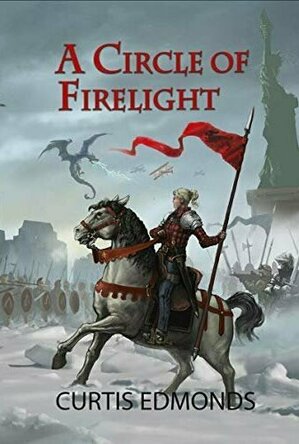
A Circle of Firelight
Book
The execution is for the most part charming and clever, with lively dialogue, easy pacing, and...


